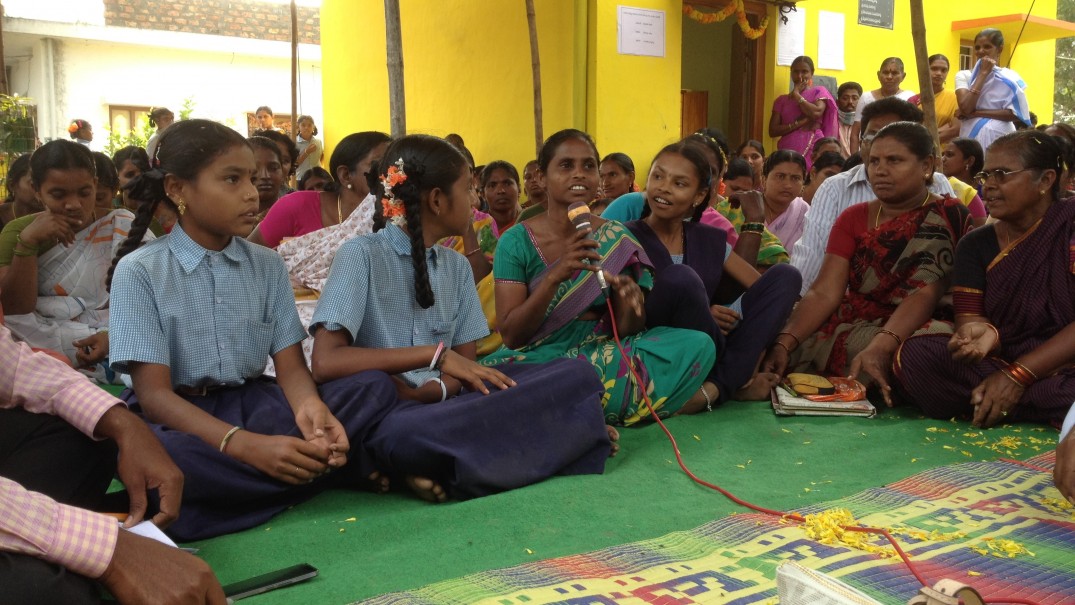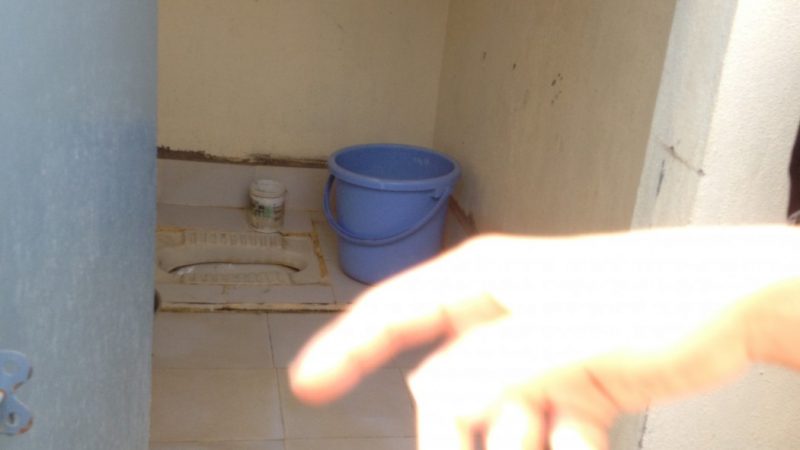
With a population of 84 million people, Andhra Pradesh (AP) is home to one-sixth of the world population defecating in the open. According to First Speaker of the Andhra Pradesh Legislative Assembly, Dr. Kodela Siva Prasada Rao, “health expenditure due to poor sanitation wipes off 2-3% of the State Domestic Product and 7 out of 10 girls drop out of schools with no toilets.”
AP was among the first states in India to launch Total Sanitation Campaign (TSC) in 1999. The TSC was revised in 2012 to form the Nirmal Bharat Abhiyan (NBA) and in 2014 was merged with the Swachh Bharat Abhiyan (The Clean India Campaign). The Swachh Bharat Abhiyan (Clean India Campaign or SBA) campaign was launched in India on Oct 2, 2014 by PM Narendra Modi to eradicate open defecation by prioritizing “subsidized” latrine construction across rural and urban India. As a growing body of literature establishes a link between open defecation and stunted growth of children, under nutrition, and sexual violence of women, the urgency to tackle the malaise finds a meaningful voice in the United Nations’ newly charted Sustainable Development Goal—6 targeting concerted action by countries to eradicate open defecation by 2030.
According to the Swachh Andhra Corporation, in 2015-16, 90277 latrines are constructed with 180426 currently under construction while for rural AP the number of IHHLs completed stands at 243,883, with another 448,461 latrines under construction. When compared to pre-SBA period, these figures are impressive. However, latrine usage is dismal with around 70% of them non-functional. Many of them have been converted into warehouses, kitchens, or play areas for children. The team of 3 researchers from our school conducted a field visit to understand this gulf between latrine construction and usage.
This report provides some insights into this issue, condensed from interviews with urban beneficiaries of subsidies for latrine construction in Vijayawada and rural beneficiaries in Abburu village in Guntur district, in AP.
Issues in Latrine uptake:

Researchers: Dr. Yvonne Jie Chen, Dr.Sanchita Talukdar and Dr. Namrata Chindarkar with Dr. Kodela Shiva Prasada Rao in a meeting.
The state government officials reported a gap in the uptake of toilets in the rural areas of AP on account of deep seated superstition associated with the installation of latrines and septic tanks within the premises of the house. A common belief among villagers is that the “ septic tanks bring death and bad luck to the family.” “We have to build toilets in the minds of the people first”, said the Director of the Rural Water and Sanitation department. Changing people’s cultural attitudes towards the use of latrines remains challenging.
A media official from the state informed us that the significance of health and hygiene through proper usage of toilets is not covered in the school curriculum at the preschool and primary levels. He said that “social media campaigns to propagate usage of toilets at the national level (For example ‘the no latrines, no marriage’ campaign) when dubbed in local Telugu language lost its impact and was not well received by the people in the rural villages in AP.” Effective campaigns on sanitation and latrine usage should be tailored for local rural populations so that they can relate to and understand the importance of sanitation.
However, our field trip to a village and our meeting with urban beneficiaries showed that latrines can indeed be viewed very favourably.
While all of the urban beneficiaries we interviewed cited the financial incentive of INR15000 as a strong incentive for them to build latrines in their households, none of them admitted to that as the sole incentive.
In the rural Abburu village, it was initially the village sarpanch (head of the village), who first initiated construction of individual household latrines, on receiving a letter from the state government. “When we saw our Sarpanch digging the toilet pits that we got really inspired to build one in our house”, a villager informed us during our visit.
At the village meeting attended mostly by women and school children, a woman reported that open defecation on roads and other open spaces in the village was a common sight before the construction of the latrines. Defecating in the open led to rising medical bills due to the increased frequency of diseases such as malaria and chikungunya, and the increased risk of snake bites.
“Women are harassed by men when they go out in the open to defecate”, the head of the village added, with some women relating how the practice made young girls and women vulnerable to harassment. The fear of going out after dark made them eat less food and drink very little water after noon. Similar issues pertaining to the perils of open defecation were reported by women in the urban areas.
Self-help groups (SHGs) also participated in sustained efforts with the sarpanch in educating villagers via campaigns on cleanliness. These campaigns motivated villagers to keep their toilets clean and practice hand washing regularly.

A latrine in Abburu
Women in Abburu cited falling medical expenditures as one of the major benefits of toilets. “Children can now have a bath every day”, reported a participant in the meeting. Since the size of the latrine has increased to 4 by 6 feet from the earlier 4 by 2 feet, a bathing area is accommodated within the latrine making it convenient for women and children to have a bath.
The village sarpanch informed us that bulk procurement of materials such as cement and concrete pipes helped in lowering the costs of latrine construction in the village. Sanitation has been promoted as means of improving rural livelihoods at the village level by providing construction-related skills development in areas such as masonry. This has contributed to employment creation in the village. Explaining the benefits of constructing latrines in schools, a school teacher from the nearby school reported that children could attend schools without interrupting their lessons to look for toilets in neighbouring houses.
Both rural and urban participants of our meetings showed awareness regarding the clearing of latrine pits once filled. They are aware of the associated costs of clearing these pits. One urban beneficiary complained about disposal of the pit waste, “There seems to be no proper mechanism in place to dispose the pit waste.”
The way forward:
The value of a latrine ultimately depends on whether it is used or not. One of the ways to tackle low latrine usage is through understanding the sanitation behaviour of the community. Creating demand for latrines through effective information and education campaigns needs to happen in parallel with building subsidized latrines and providing sanitation infrastructure. From our field trip, we learned that increased well-being and health benefits accruing from latrine usage in Abburu village has multiplier effects within the community itself in the form of changing attitudes towards open defecation. This can serve as a model to be replicated in other parts of India.
Sanchita Talukdar is a Research Associate at the Institute of Water Policy at the Lee Kuan Yew School of Public Policy.
Acknowledgement: The NUS researchers thank the WTO (World Toilet Organisation) for facilitating all the meetings with stakeholders and state officials in Andhra Pradesh.